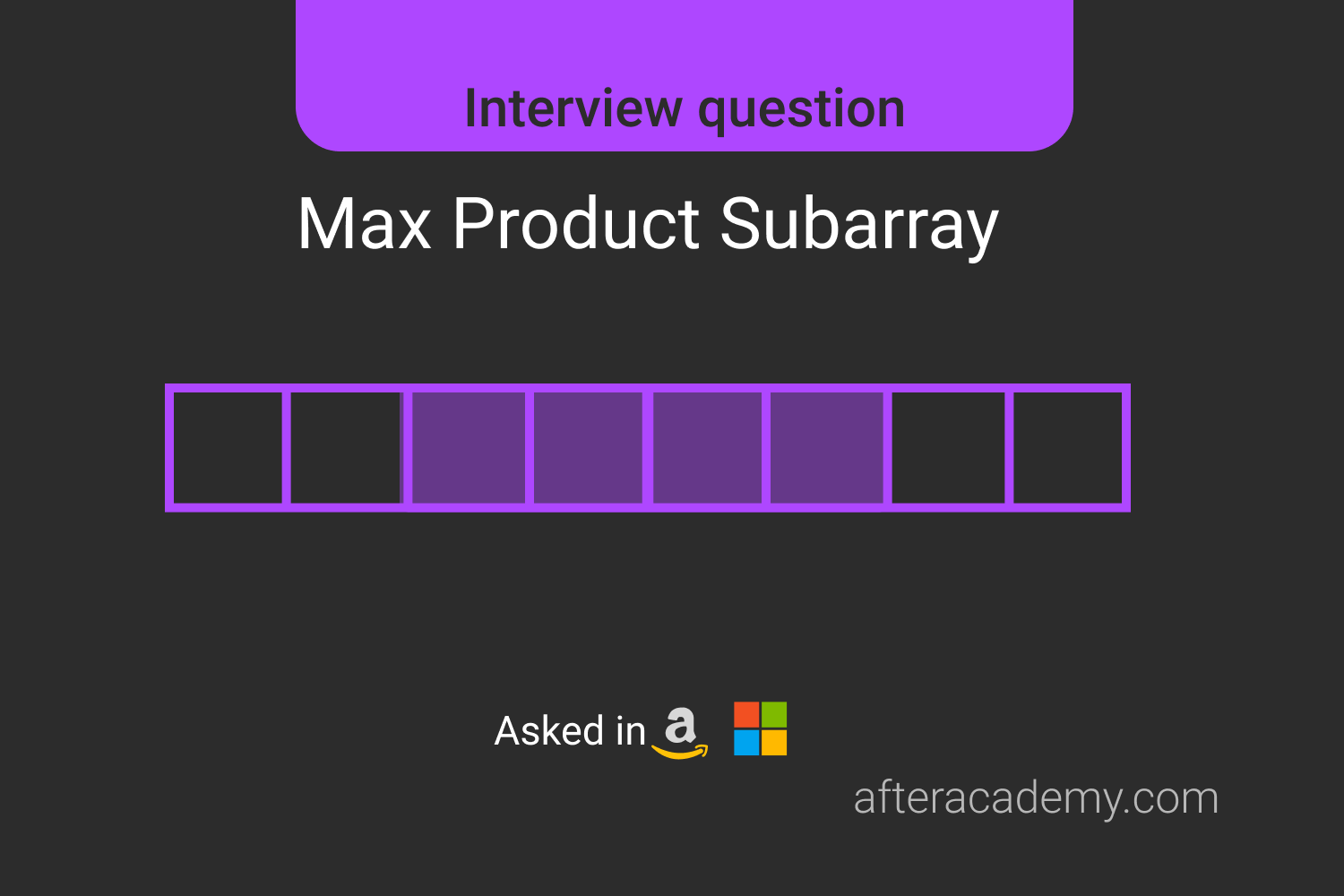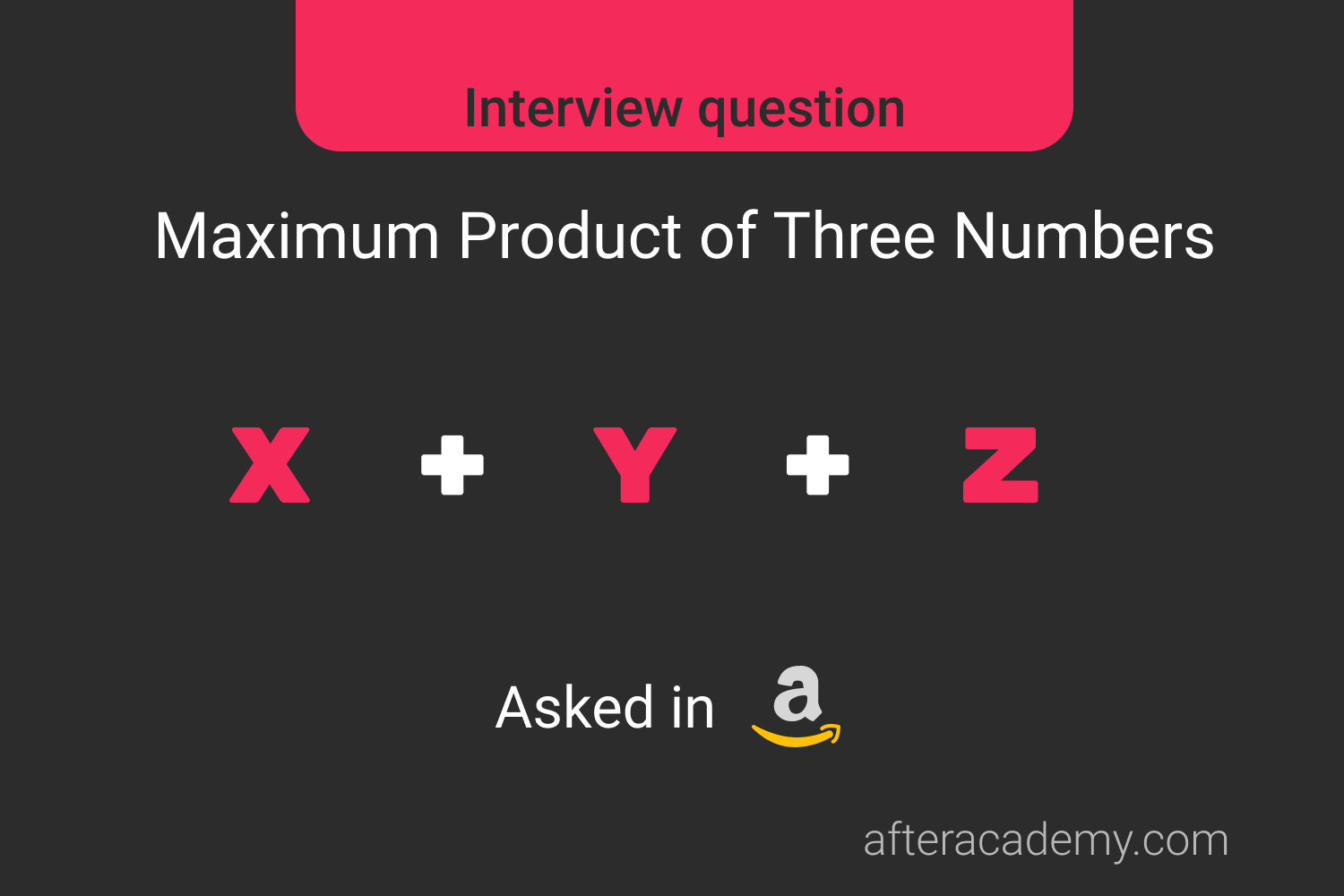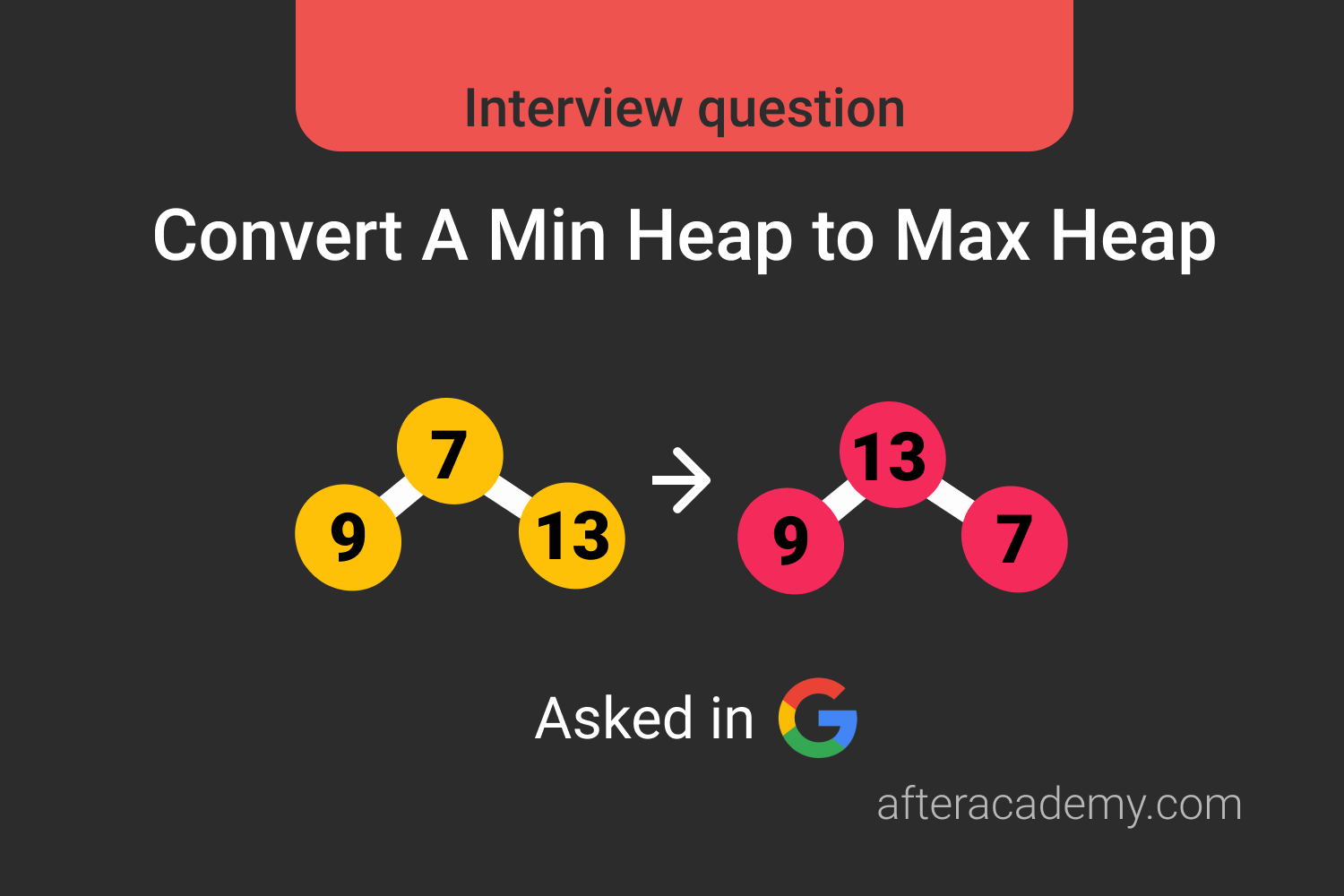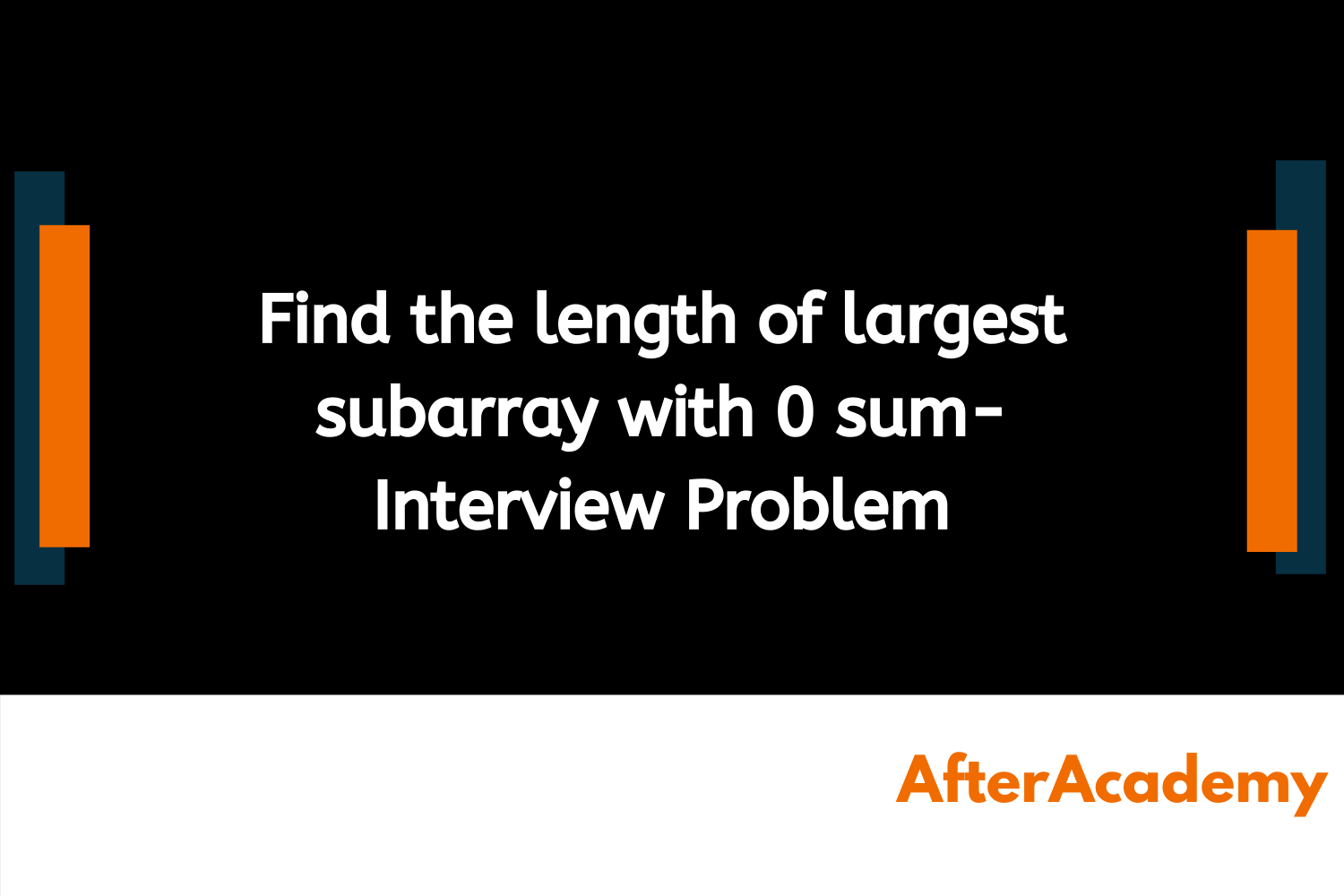Max Product Subarray
AfterAcademy Tech
•
18 Jul 2020

Difficulty: Medium
Asked in: Amazon, Microsoft
Understanding The Problem
Problem Description
You are given an array arr[] with n elements. Write a program to find the contiguous subarray which has the largest product.
Problem Note
- A contiguous subarray of an array
arr[]of lengthnis a contiguous segment fromarr[i]througharr[j]where0<= i <= j <= n. - Array
arr[]may contain both positive and negative integers. If the array contains all non-negative numbers, the maximum subarray is the product of the entire array.
Example 1
Input: arr[] = [9, -6, 10, 3]
Output: 30
Explanation: The subarray [10, 3] has the maximum product.
Example 2
Input: arr[] = [6, -3, -10, 0, 2]
Output: 180
Explanation: The subarray [6, -3, -10] has the maximum Product.
Example 3
Input: arr[] = [-2, -3, 0, -2, -40]
Output: 80
Explanation: The subarray [-2, -40] has the maximum product.
Solutions
- Brute Force: Find all the subarray products and return the maximum.
- Dynamic Programming: Keep track of the minimum and maximum products while scanning
arr.
You may try the problem here.
1. Brute Force
To find the maximum product of a subarray in the given array we can calculate for all the possible products and return the maximum.
Solution Step
- Create
maxProductto store the maximum subarray product. - For every pair of integers
(i, j)in the rangesize(arr) - Calculate the product of
arr[i . . . j]and updatemaxProduct.
Pseudo Code
int maxSubArrayProduct(int[] arr, int size) {
int maxProduct = INT_MIN
for(int i=0 to i < size){
localProduct = 1
for(int j=i to j < size){
localProduct = localProduct * arr[j]
}
maxProduct = max(maxProduct, localProduct)
}
return maxProduct
}
Complexity Analysis
Time Complexity: O(n²)
Space Complexity: O(1)
Critical Ideas To Think
- Why we initialized
localProductwith 1? - What if we initialized
maxProductwith 1? - Dry run this on some sample test cases and try to optimize the solution.
2. Dynamic Programming
Imagine that we have both max_prod[i] and min_prod[i] i.e. max product ending at i and min product ending at i.
Now if we have a negative number at arr[i+1] and if min_prod[i] is negative, then the product of the two will be positive and can potentially be the largest product. So, the key point here is to maintain both the max_prod and min_prod such that at iteration i, they refer to the max and min product ending at index i-1.
In short, One can have three options to make at any position in the array.
- You can get the maximum product by multiplying the current element with the maximum product calculated so far. (might work when current
element is positive). - You can get the maximum product by multiplying the current element with minimum product calculated so far. (might work when current
element is negative). - The current element might be a starting position for maximum product subarray.
Solution Steps
- Initialize
maxProductwitharr[0]to store the maximum product so far. - Initialize to variables
imaxandiminto store the maximum and minimum product tilli. - Iterate over the
arrand for each negative element of arr, swapimaxandimin. (Why?) - Update
imaxandiminas discussed above and finally returnmaxProduct
Pseudo Code
int maxSubArrayProduct(int[] arr, int size) {
int maxProduct = arr[0]
int imax = arr[0]
int imin = arr[0]
for(int i=1 to i<size) {
if(arr[i]<0)
swap(imax,imin)
imax = max(arr[i], imax * arr[i])
imin = min(arr[i],imin * arr[i])
maxProduct = max(maxProduct, imax)
}
return maxProduct
}
Complexity Analysis
Time Complexity: O(n)
Space Complexity: O(1)
Critical Ideas To Think
- What if the array has just positive numbers including zero?
- If we store the prefix product of
arrsaypref_arrand the suffix product ofarrsaysuf_arrand then return the maximum of pref_arr andsuf_arr, will the solution work? If yes, then do you think that the above-discussed approach is analogous to it?
Comparison of Solutions

Suggested Problems to Solve
- Product of Array Except Self
- Maximum Product of Three Numbers
- Subarray Product Less Than K
If you have any more approaches or you find an error/bug in the above solutions, please comment down below.
Happy Coding!
Enjoy Algorithms!
Written by AfterAcademy Tech
Share this article and spread the knowledge
Read Similar Articles
AfterAcademy Tech
Maximum Subarray Sum
You are given an array A[] with n elements. You need to find the maximum sum of a subarray among all subarrays of that array. A subarray of array A[] of length n is a contiguous segment from A[i] through A[j] where 0<= i <= j <= n.

AfterAcademy Tech
Maximum Product Of Three Numbers
write a program to find three numbers whose product is maximum and output the maximum product. This is a basic mathematical problem and requires logical skill to solve.

AfterAcademy Tech
Convert A Min Heap to Max Heap
Given array representation of min Heap, write a program to convert it to max Heap. This problem will clear the concepts of the heap and priority queue which is a very important concept of data structures.

AfterAcademy Tech
Find the length of largest subarray with 0 sum
Given an array A[] of n integer elements, find the length of the longest subarray with sum equals to 0.
